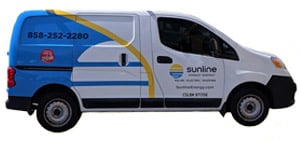California leads the way in electric vehicle (EV) sales. In fact, the state is on track to add 1.5 million EV’s to the road by 2025.
From a strictly environmental standpoint, this is a beautiful thing. For unlike traditional gas-guzzlers, electric vehicles don’t emit pollution. They don’t even have tailpipes. And for drivers who charge their vehicles using solar panels, there are no indirect CO2 emissions either. This combination allows EV owners to drive on 100% pure sunshine.
But state regulators are now looking at EV’s to help make the power grid stronger and more reliable.
Let’s take a look.
How Can Electric Vehicles Make the Power Grid Stronger?
California faces an interesting dilemma. As more homeowners and businesses go solar, this is creating extra strain throughout the electricity grid. Photovoltaic (PV) panels generate a tremendous amount of power during the day. But once the sun sets, supply suddenly dips, and grid operators must scramble to meet nighttime electricity demand.
Normally, this would involve adding more fossil fuel capacity to the grid. Alternatively, utilities could add more storage capacity as well.
Both of these solutions would work. But they’re quite expensive. And in the case of fossil fuel, we’d be taking a step in the wrong direction. Adding more oil, gas, and coal translates to more pollution.
But EV’s represent a golden opportunity.
Each electric vehicle already comes equipped with onboard batteries. In effect, these cars are traveling storage units that crisscross the state.
If California could tap into this latent power, it could potentially solve the supply/demand mismatch that currently plagues the state’s electricity grid.
How might that work?
Simple:
- During the day, every electric vehicle would soak up as much energy as it can – ideally from solar, wind, and other renewable energy sources.
- At night, the same EV’s would then send some of their stored power back into the grid to help meet nighttime demand.
Instead of having centralized battery stations scattered throughout California, the state could benefit from a distributed and mobile network of storage units.
It seems like a very workable approach. And we hope that regulators and grid operators move forward with this EV storage plan.
What we like most about this solution is that financing such a project would also be largely distributed. Utility companies and private investors could finance solar charging stations. And individual drivers would finance the batteries that come with their cars.
Sounds like a win-win.
To learn more about solar power, electric vehicles, and driving on sunshine, contact us today for a free consultation (858) 252-2280 of fill out the contact form and we will get back to you shortly.

